 Looking back 50 years or more to what you’d see in a motorcycle dealer’s showroom, most offerings would be full size bikes with a variety of engine sizes. Seat heights were about 28 inches or more, weights ranged from 250 to 650 pounds and it was a long reach to the handlebar. Unless you were at a dealer with scooters, or commercially made mini-bikes.
Looking back 50 years or more to what you’d see in a motorcycle dealer’s showroom, most offerings would be full size bikes with a variety of engine sizes. Seat heights were about 28 inches or more, weights ranged from 250 to 650 pounds and it was a long reach to the handlebar. Unless you were at a dealer with scooters, or commercially made mini-bikes.
A classic mini-bike is made up of a two to three horsepower rope or recoil start lawn-mower engine in simple tubular frame with a wheelbases of 35 to 40 inches. V-Belt drive with a tensioner was common, later on simple centrifugal clutches for chain drive added efficiency and simplicity. The mini-bike concept offered a spunky, spirited ride, of course, with little or no true suspension. American companies with tube bending, sheet metal forming and welding capacity branched out with new product for hardware and department stores plus motorcycle shops. And with a little know-how and maybe some plans from the back of Popular Mechanics, or even a kit, you could make your own mini-bike and become part of the motorcycle world. Unlike typical motorcycle offerings, even little kids could ride small lightweight mini-bikes.
But finally in the late 1960’s Honda jumped into this market which was by then finally down to Fox, Bonanza and Rupp plus a few others, and made a great little machine they named the Mini-Trail. First offered in Japan and referred to as Monkey Bikes, the Mini-Trail version was built around an overhead cam 49cc air-cooled “sloper” engine similar to what Honda used in their step-through 50’s; the “You Meet the Nicest People…” C100 and its dozens of iterations. Frames were bent and welded steel tubing with no rear suspension, but the small fork offered a few inches of travel. The Honda had a more sophisticated short kick-starter. The seats were plush, handlebars folded flat to allow for transport in the family sedan. The typical lawn mower-engine minibike with a centrifugal clutch was wrung out at 25 to 30 MPH, but the Honda Mini-Trail had a three-speed transmission with an automatic clutch and foot shift. There were front and rear drum brakes, just like on bike bikes. Adults and kids could ride Honda Mini-Trails and many hundreds of thousands have been sold and pounded around back yards and vacant lots. Honda certainly caught the wave with the Mini-Trail 50 as they did with the larger CT70 and the US90 (ATC90) three-wheeler a couple of years later. And these small Hondas created many lifetime Honda customers, but manufacture ended in 2017 with a “final version.” Larger, more powerful and sophisticated, Honda has a new 125cc “retro” version of the Mini Trail called the Monkey released in 2019.
This nicely restored Honda Mini-Trail is on loan from National Motorcycle Museum supporter and restorer Jay Gaard. It’s one of about 18 scooters and minibikes you can see when you visit the National Motorcycle Museum.
Specifications:
-
- Engine: Air-Cooled Single, OHC
- Bore & Stroke: 39mm x 41.4mm
- Displacement: 49cc
- Compression Ratio: 8.8 : 1
- Horsepower: 1.95HP at 5,000
- Primary: Gear Driven
- Transmission: Semi-Automatic 3-Speed
- Clutch: Automatic
- Final Drive: Chain
- Wheels/Tires: 3.50 x 8 / 3.50 x 8
- Wheelbase: 43.5 Inches
- Weight: 115 Pounds
- Colors: Red/Silver, Blue/Silver, Yellow/Silver
Leave a Reply
Want to join the discussion?Feel free to contribute!









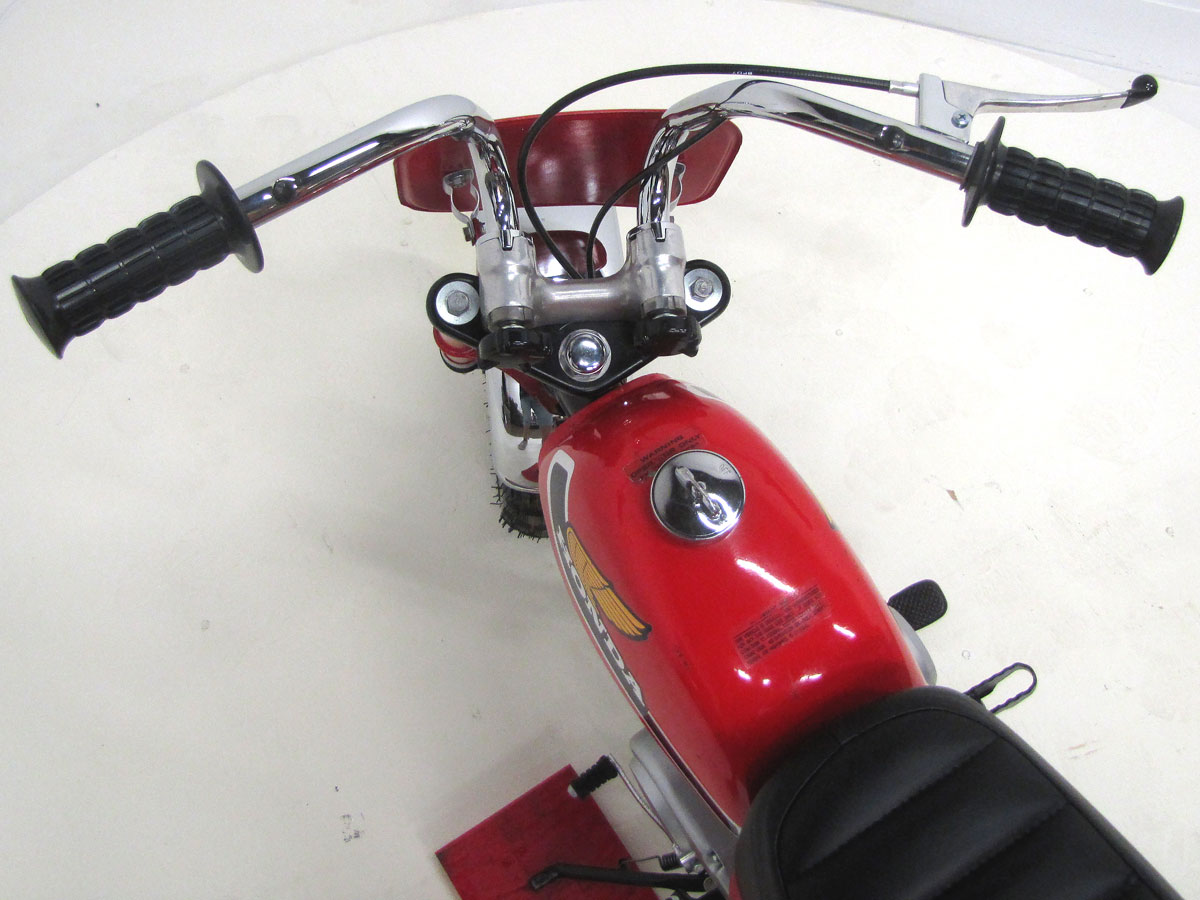


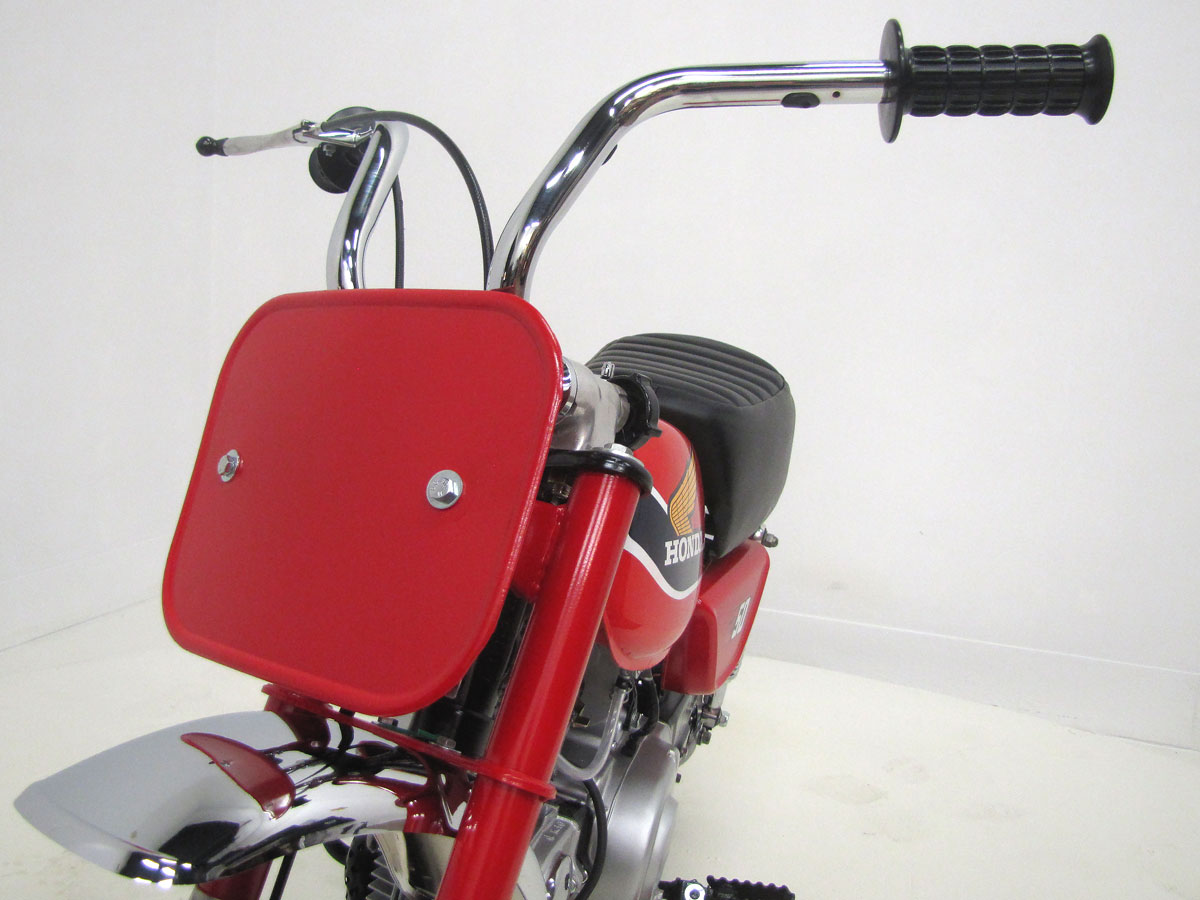




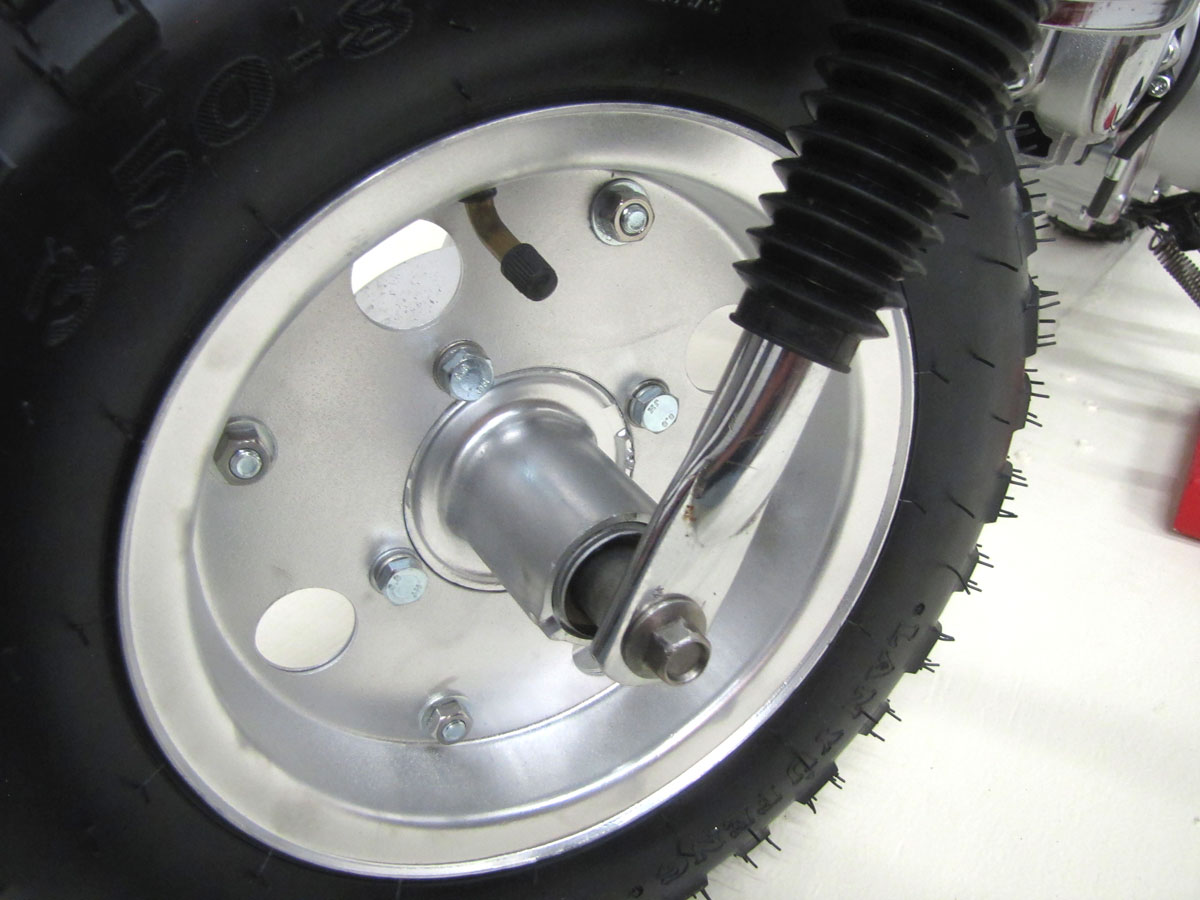

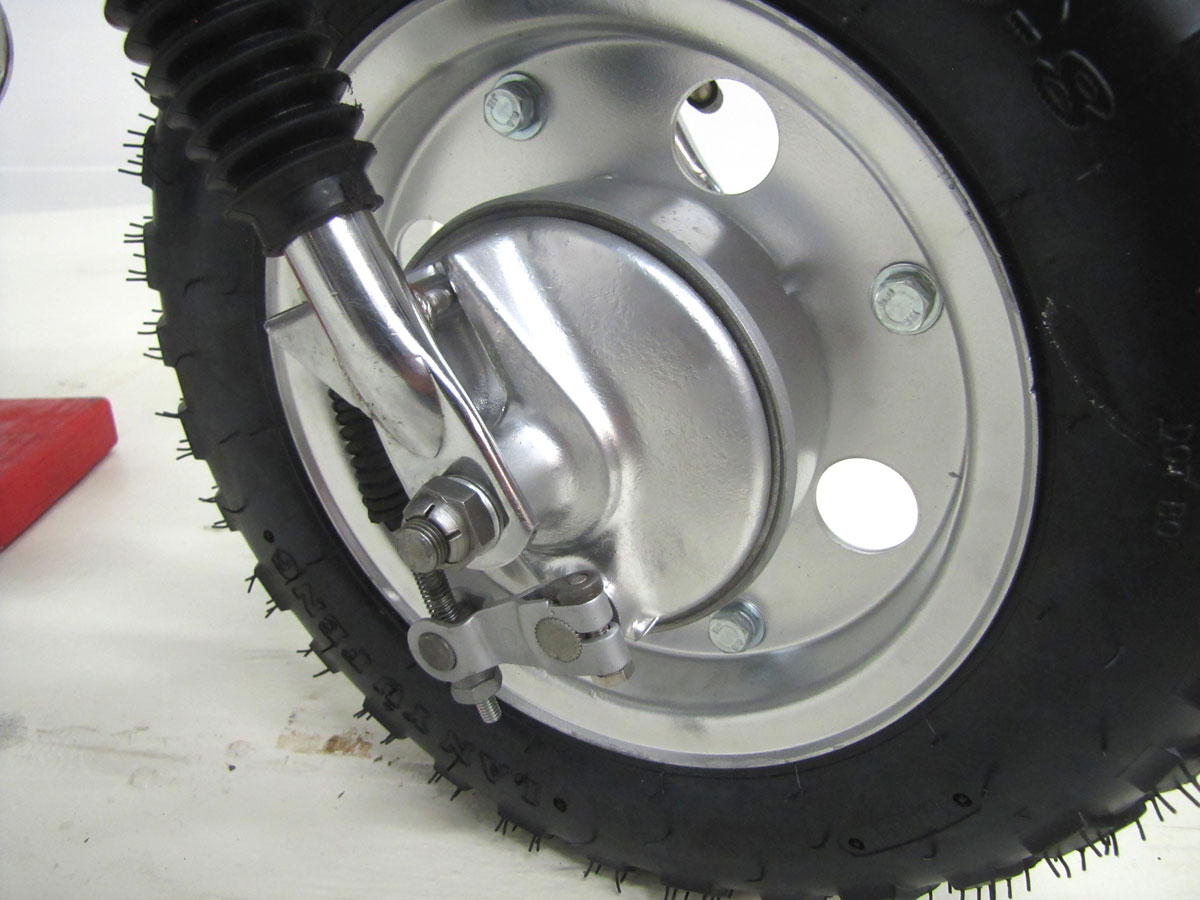




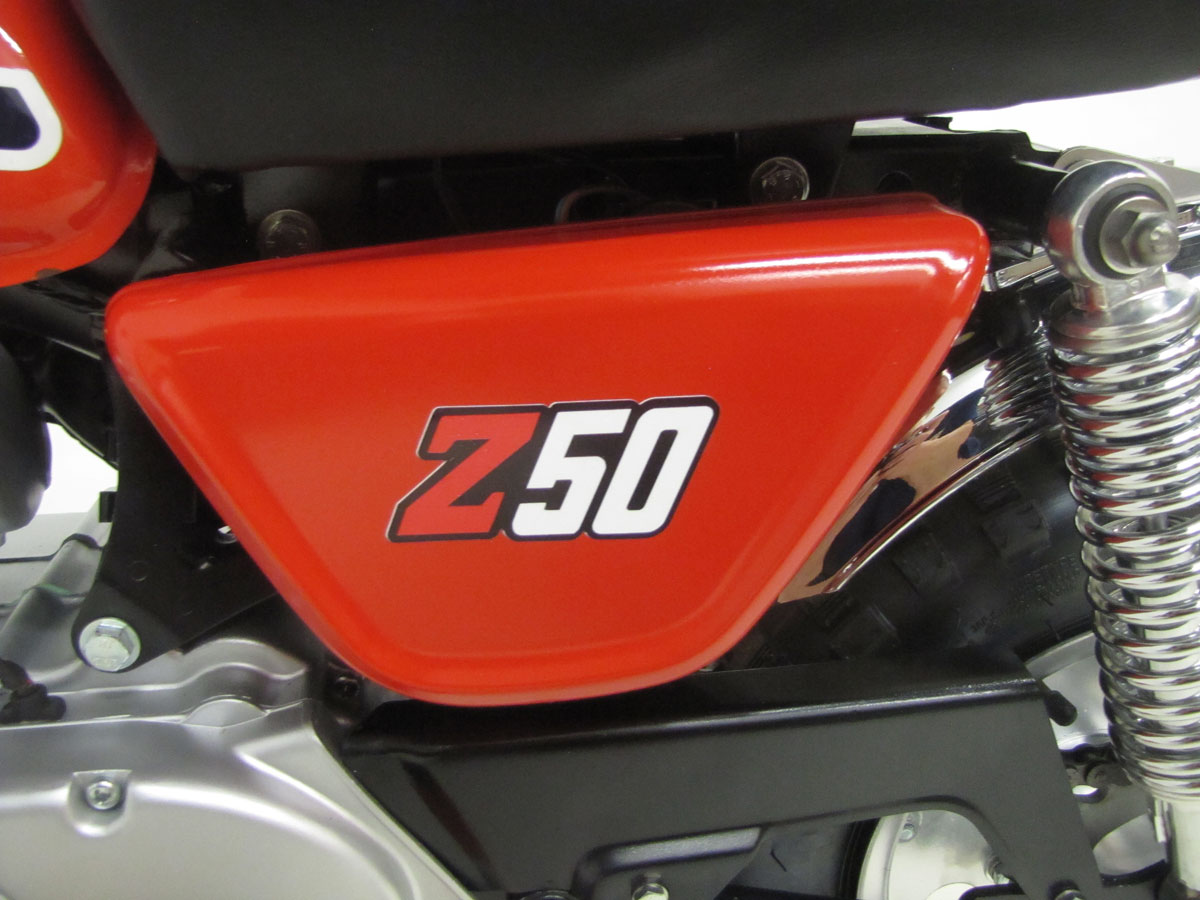
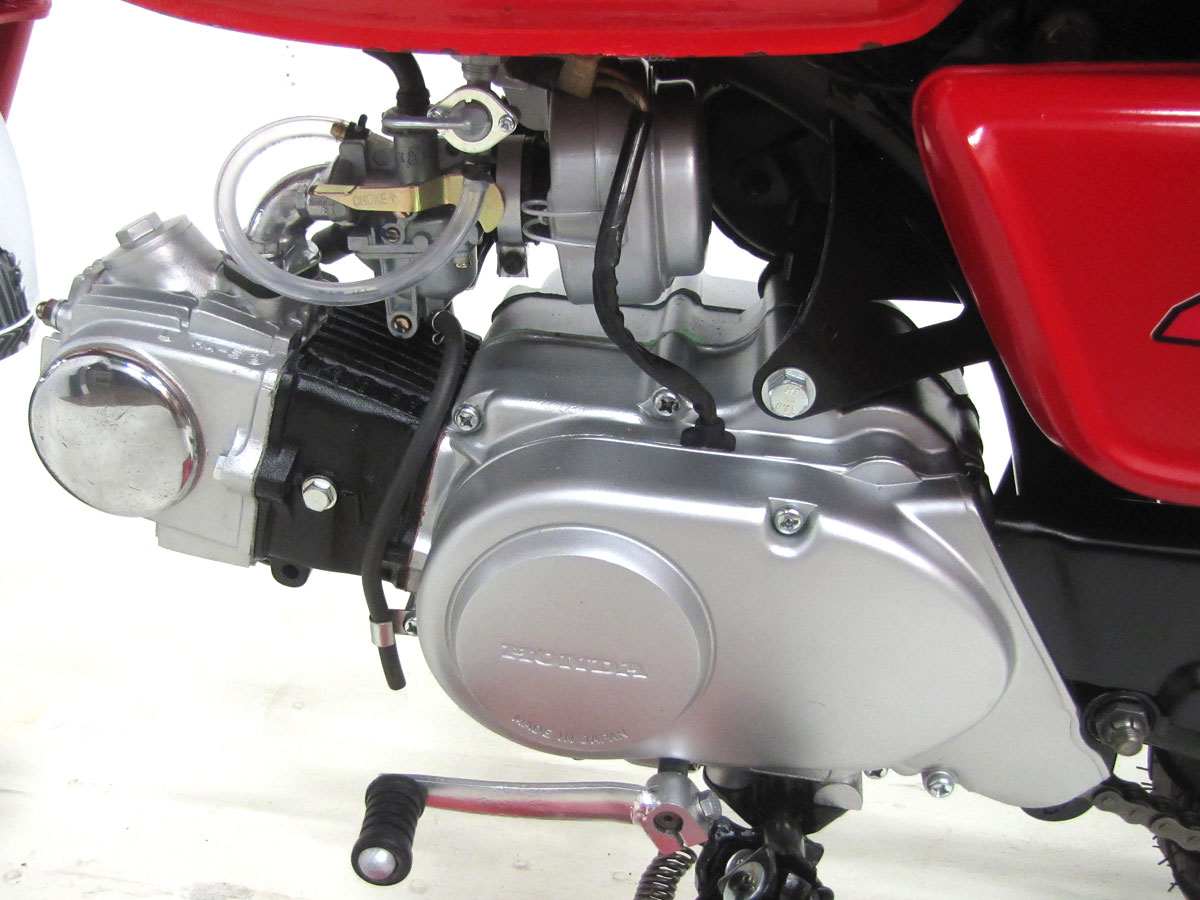

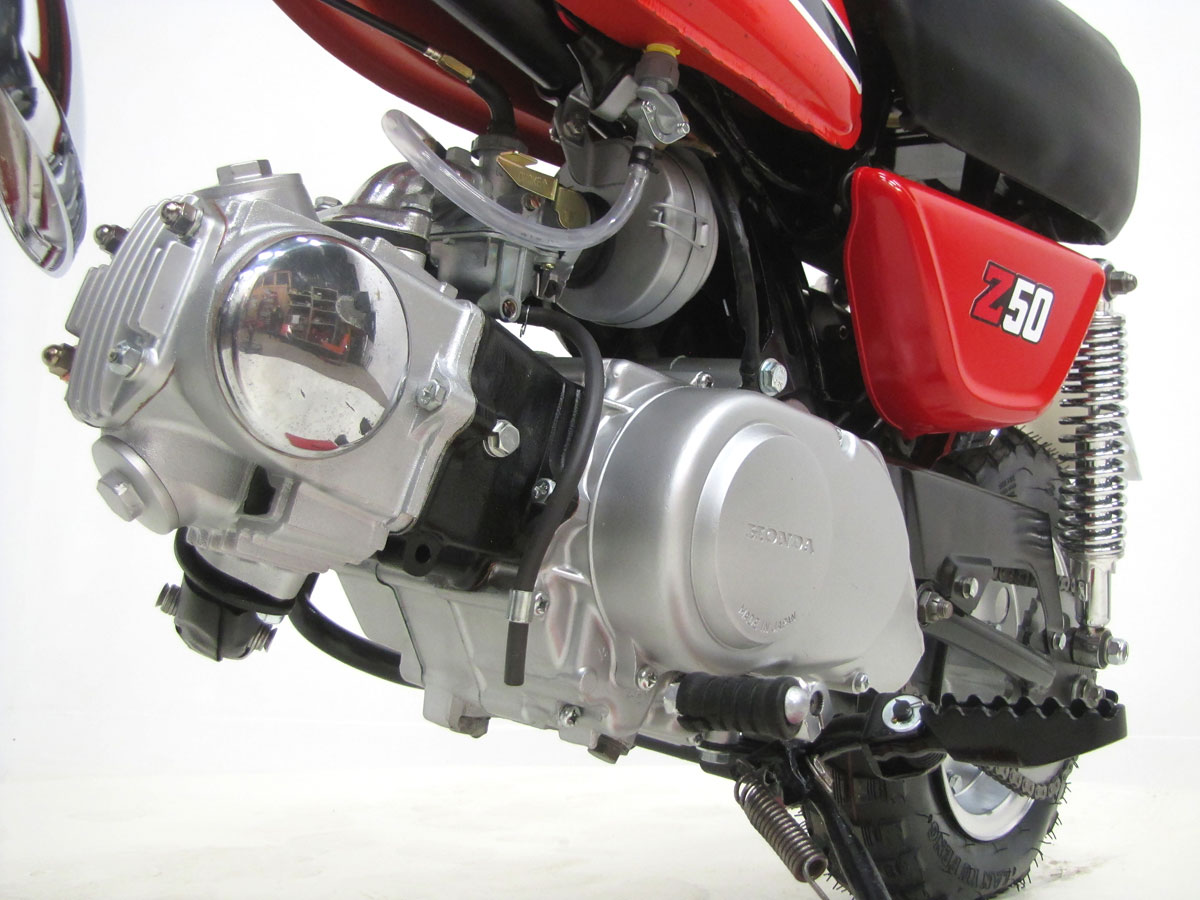




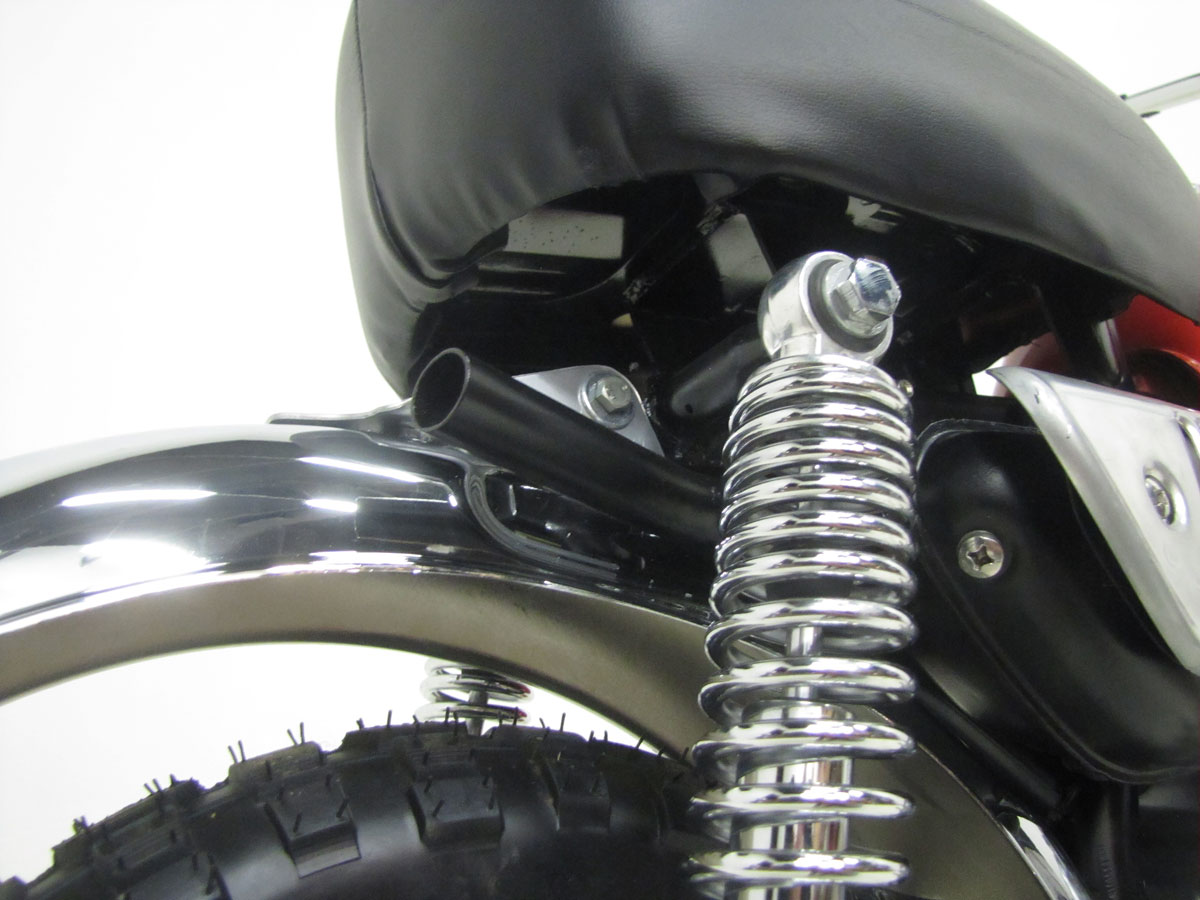

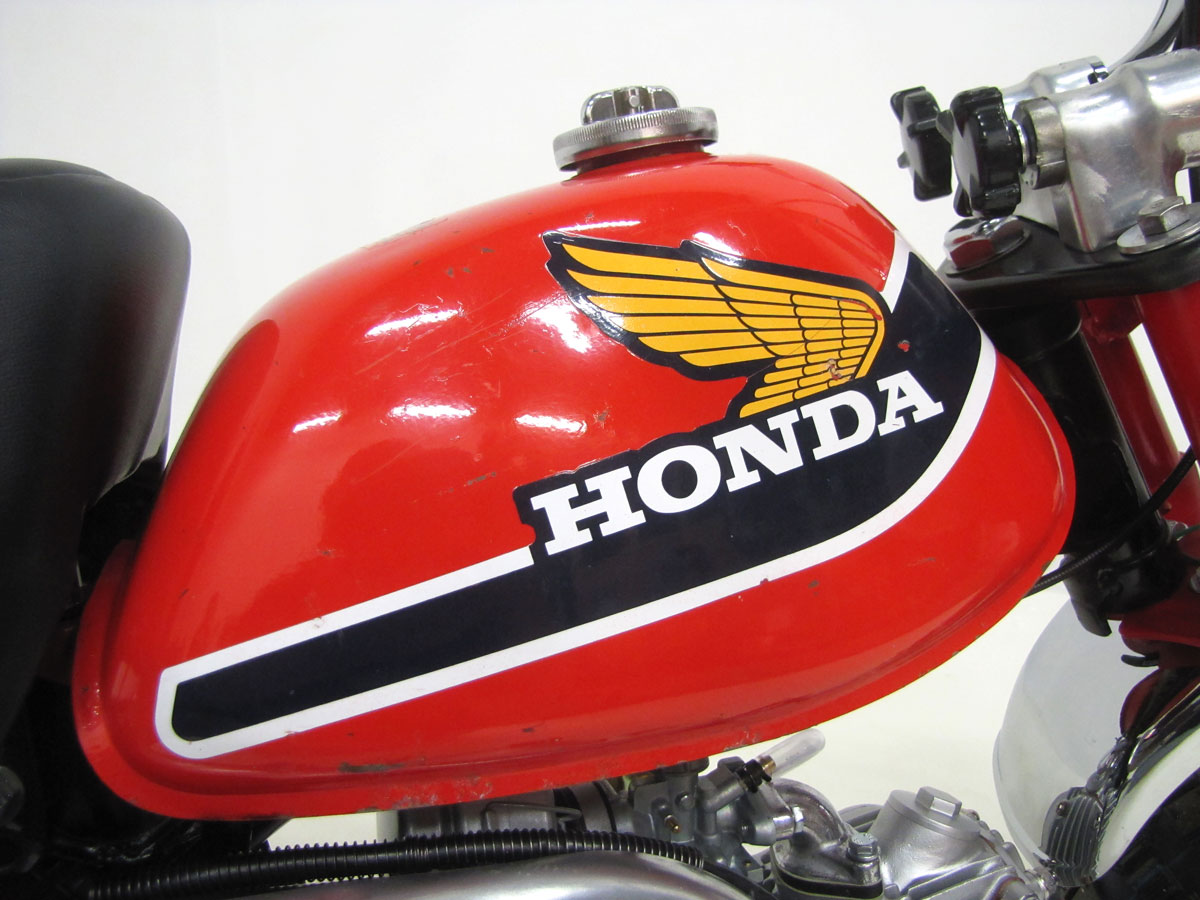


Was a fun little bike to buzz around the yard, if you held the shift pedal down you could rev the engine and release the shift lever and pop wiheelies 🙂 one thing you have wrong though is it had a 2 speed transmission, at least the one i rode. i had a Honda 50 road bike, now i have a cherry Red and Cream ’97 Valkyrie that is showroom condition and chromed front to 5″ howitzer dual tailpipes compliments of Horseapple ranch in CO. it is an 800 pound Gorilla.
Hi Bill, Thanks for featuring the mini trail. and as always karlas pictures look great. if i say so myself it looks pretty good.
The Honda Mini Trail monkey bikes did have a 3-speed tranny. The Honda QA50 had a 2-speed.